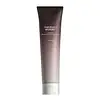What's inside
What's inside
 Key Ingredients
Key Ingredients

No key ingredients
 Benefits
Benefits

 Concerns
Concerns

 Ingredients Side-by-side
Ingredients Side-by-side

Water
Skin ConditioningSucrose
HumectantCoco-Betaine
CleansingGlycerin
HumectantCoco-Glucoside
CleansingDisodium Cocoyl Glutamate
CleansingXanthan Gum
EmulsifyingCymbopogon Schoenanthus Oil
MaskingCentaurea Cyanus Flower Water
Skin ConditioningSodium Chloride
MaskingSodium Cocoyl Glutamate
CleansingArginine
MaskingPropanediol
SolventCitric Acid
BufferingSodium Benzoate
MaskingSalicylic Acid
MaskingLinalool
PerfumingEugenol
PerfumingLimonene
PerfumingCitral
PerfumingParfum
MaskingWater, Sucrose, Coco-Betaine, Glycerin, Coco-Glucoside, Disodium Cocoyl Glutamate, Xanthan Gum, Cymbopogon Schoenanthus Oil, Centaurea Cyanus Flower Water, Sodium Chloride, Sodium Cocoyl Glutamate, Arginine, Propanediol, Citric Acid, Sodium Benzoate, Salicylic Acid, Linalool, Eugenol, Limonene, Citral, Parfum
Water
Skin ConditioningGlycerin
HumectantCoco-Betaine
CleansingPropanediol
SolventPentylene Glycol
Skin ConditioningSodium Chloride
Masking1,2-Hexanediol
Skin ConditioningXanthan Gum
EmulsifyingHydroxyethylcellulose
Emulsion StabilisingPotassium Cocoyl Glycinate
Potassium Cocoate
EmulsifyingOryza Sativa Extract
AbsorbentPhyllostachys Pubescens Shoot Bark Extract
Skin ConditioningPanax Ginseng Root Extract
EmollientAspergillus Ferment Extract Filtrate
HumectantBeta-Glucan
Skin ConditioningButylene Glycol
HumectantTrehalose
HumectantCitric Acid
BufferingCyclodextrin
AbsorbentZanthoxylum Piperitum Fruit Extract
Skin ConditioningPulsatilla Koreana Extract
Skin ConditioningUsnea Barbata Extract
Ethylhexylglycerin
Skin ConditioningWater, Glycerin, Coco-Betaine, Propanediol, Pentylene Glycol, Sodium Chloride, 1,2-Hexanediol, Xanthan Gum, Hydroxyethylcellulose, Potassium Cocoyl Glycinate, Potassium Cocoate, Oryza Sativa Extract, Phyllostachys Pubescens Shoot Bark Extract, Panax Ginseng Root Extract, Aspergillus Ferment Extract Filtrate, Beta-Glucan, Butylene Glycol, Trehalose, Citric Acid, Cyclodextrin, Zanthoxylum Piperitum Fruit Extract, Pulsatilla Koreana Extract, Usnea Barbata Extract, Ethylhexylglycerin
 Reviews
Reviews

Ingredients Explained
These ingredients are found in both products.
Ingredients higher up in an ingredient list are typically present in a larger amount.
Citric Acid is an alpha hydroxy acid (AHA) naturally found in citrus fruits like oranges, lemons, and limes.
Like other AHAs, citric acid can exfoliate skin by breaking down the bonds that hold dead skin cells together. This helps reveal smoother and brighter skin underneath.
However, this exfoliating effect only happens at high concentrations (20%) which can be hard to find in cosmetic products.
Due to this, citric acid is usually included in small amounts as a pH adjuster. This helps keep products slightly more acidic and compatible with skin's natural pH.
In skincare formulas, citric acid can:
While it can provide some skin benefits, research shows lactic acid and glycolic acid are generally more effective and less irritating exfoliants.
Most citric acid used in skincare today is made by fermenting sugars (usually from molasses). This synthetic version is identical to the natural citrus form but easier to stabilize and use in formulations.
Read more about some other popular AHA's here:
Learn more about Citric AcidCoco-Betaine is the natural version of Cocamidopropyl Betaine. It is often derived from coconuts.
Coco-Betaine is a surfactant, meaning it helps remove dirt and oil from the skin.
Glycerin is already naturally found in your skin. It helps moisturize and protect your skin.
A study from 2016 found glycerin to be more effective as a humectant than AHAs and hyaluronic acid.
As a humectant, it helps the skin stay hydrated by pulling moisture to your skin. The low molecular weight of glycerin allows it to pull moisture into the deeper layers of your skin.
Hydrated skin improves your skin barrier; Your skin barrier helps protect against irritants and bacteria.
Glycerin has also been found to have antimicrobial and antiviral properties. Due to these properties, glycerin is often used in wound and burn treatments.
In cosmetics, glycerin is usually derived from plants such as soybean or palm. However, it can also be sourced from animals, such as tallow or animal fat.
This ingredient is organic, colorless, odorless, and non-toxic.
Glycerin is the name for this ingredient in American English. British English uses Glycerol/Glycerine.
Learn more about GlycerinPropanediol is an all-star ingredient. It softens, hydrates, and smooths the skin.
It’s often used to:
Propanediol is not likely to cause sensitivity and considered safe to use. It is derived from corn or petroleum with a clear color and no scent.
Learn more about PropanediolChances are, you eat sodium chloride every day. Sodium Chloride is also known as table salt.
This ingredient has many purposes in skincare: thickener, emulsifier, and exfoliator.
You'll most likely find this ingredient in cleansers where it is used to create a gel-like texture. As an emulsifier, it also prevents ingredients from separating.
There is much debate on whether this ingredient is comedogenic. The short answer - comedogenic ratings don't tell the whole story. Learn more about comegodenic ratings here.
The concensus about this ingredient causing acne seems to be divided. Research is needed to understand if this ingredient does cause acne.
Scrubs may use salt as the primary exfoliating ingredient.
Learn more about Sodium ChlorideWater. It's the most common cosmetic ingredient of all. You'll usually see it at the top of ingredient lists, meaning that it makes up the largest part of the product.
So why is it so popular? Water most often acts as a solvent - this means that it helps dissolve other ingredients into the formulation.
You'll also recognize water as that liquid we all need to stay alive. If you see this, drink a glass of water. Stay hydrated!
Learn more about WaterXanthan gum is used as a stabilizer and thickener within cosmetic products. It helps give products a sticky, thick feeling - preventing them from being too runny.
On the technical side of things, xanthan gum is a polysaccharide - a combination consisting of multiple sugar molecules bonded together.
Xanthan gum is a pretty common and great ingredient. It is a natural, non-toxic, non-irritating ingredient that is also commonly used in food products.
Learn more about Xanthan Gum